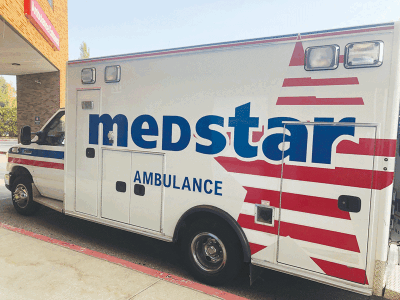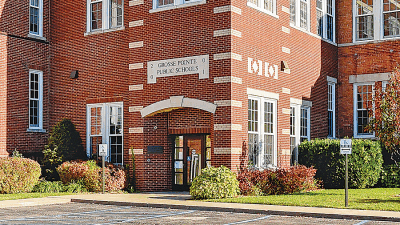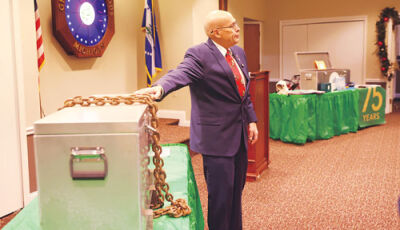
A Medstar ambulance delivers a patient to Ascension St. John Hospital in Detroit. Grosse Pointe Woods recently signed a new contract with Medstar to continue providing emergency medical services to the community.
Photo by K. Michelle Moran
GROSSE POINTE WOODS — Grosse Pointe Woods residents experiencing a medical emergency will continue to receive care from Medstar Ambulance.
The Woods City Council voted unanimously June 19 in favor of a three-year Medstar contract as part of its approval of the consent agenda. The new contract took effect at the start of the new fiscal year July 1.
The council discussed the new agreement during a Committee of the Whole meeting June 5.
During that meeting, Assistant City Administrator Susan Como said there have been no price increases from Medstar since 2018. The new contract does cost more, due to rising costs for labor, ambulances and the like on Medstar’s part.
“We feel that this is very fair,” Como told the council. “It is done on a population basis.”
The Woods had been paying an annual subsidy of $56,250 since 2018. The new subsidy is $63,501. There is a 4% annual increase in each of the subsequent years of the three-year contract.
Como said the last contract expired in 2021.
“In the Grosse Pointe communities, we have a situation where the revenue from operations doesn’t meet the cost of services,” Medstar CEO Kolby Miller said.
He said they need to have an average of 1.5 ambulances on hand to serve the four Pointes that use them — Grosse Pointe City, Grosse Pointe Farms, Grosse Pointe Park and Grosse Pointe Woods. Grosse Pointe Shores operates its own ambulance. Miller said Medstar calculated the operating costs of maintaining 1.5 trucks in the area against anticipated revenue and came up with the shortfall figure. Revenue comes from charges to a patient’s insurance company, Miller said.
“Not all responses (for 911 service) are transports (to a hospital),” Miller said.
City Councilman Michael Koester asked why the subsidy paid for by the Woods was so much higher than what the other Pointes were paying, especially given that the Woods generated the greatest amount of annual revenue for Medstar — $427,025, as compared with $232,696 from Grosse Pointe Farms, which will pay an annual subsidy of $48,956 this fiscal year to the ambulance provider.
“Objectively, I don’t think we’re getting a bad deal,” Koester said, but noted that the Woods “is delivering so much more revenue” than the other cities.
Miller said Medstar let the city managers in the Pointes come up with a subsidy formula, which they based largely on population.
Because the Woods has the largest population of any of the other Pointes, with almost 16,500 residents, its subsidy is also the greatest.
“At some point, there’s an uneven cost (distribution),” Miller said.
The Park has the second-largest population, with nearly 11,600 residents. Its subsidy for this fiscal year is $48,956.
“Were any of the cities to do this on their own, it would be very expensive,” Miller said of maintaining ambulance service. “I do think it’s a great value. We have great (customer) satisfaction surveys.”
City Councilwoman Vicki Granger agreed.
“You guys have provided a good service at a cost we weren’t able to sustain,” Granger said.
Response times have been fairly quick, Medstar reports.
“By and large, we’re talking about a two-, three-, four-minute response time,” Miller said. “Every now and then there is a longer response time. We do our best.”
Medstar is an independent nonprofit that’s owned by three hospital systems — Ascension Michigan, Henry Ford Health and McLaren Health Care. However, those hospital affiliations don’t impact where patients are taken, said Miller, noting that patients transported by Medstar are fairly evenly distributed among hospitals in their area.
Miller said the patient usually chooses which hospital to be taken to, unless that hospital is extremely far or critical protocols — such as for a heart attack — dictate otherwise.
“Unless there’s something critical, you’re going where you want to go,” Miller said.
Not all insurance plans cover all ambulance costs, so Miller said patients do get a bill for whatever insurance doesn’t cover. However, he said patients who can document that they lack the income to pay for the remainder can be put on a payment plan or receive a hardship waiver.
 Publication select ▼
Publication select ▼



















